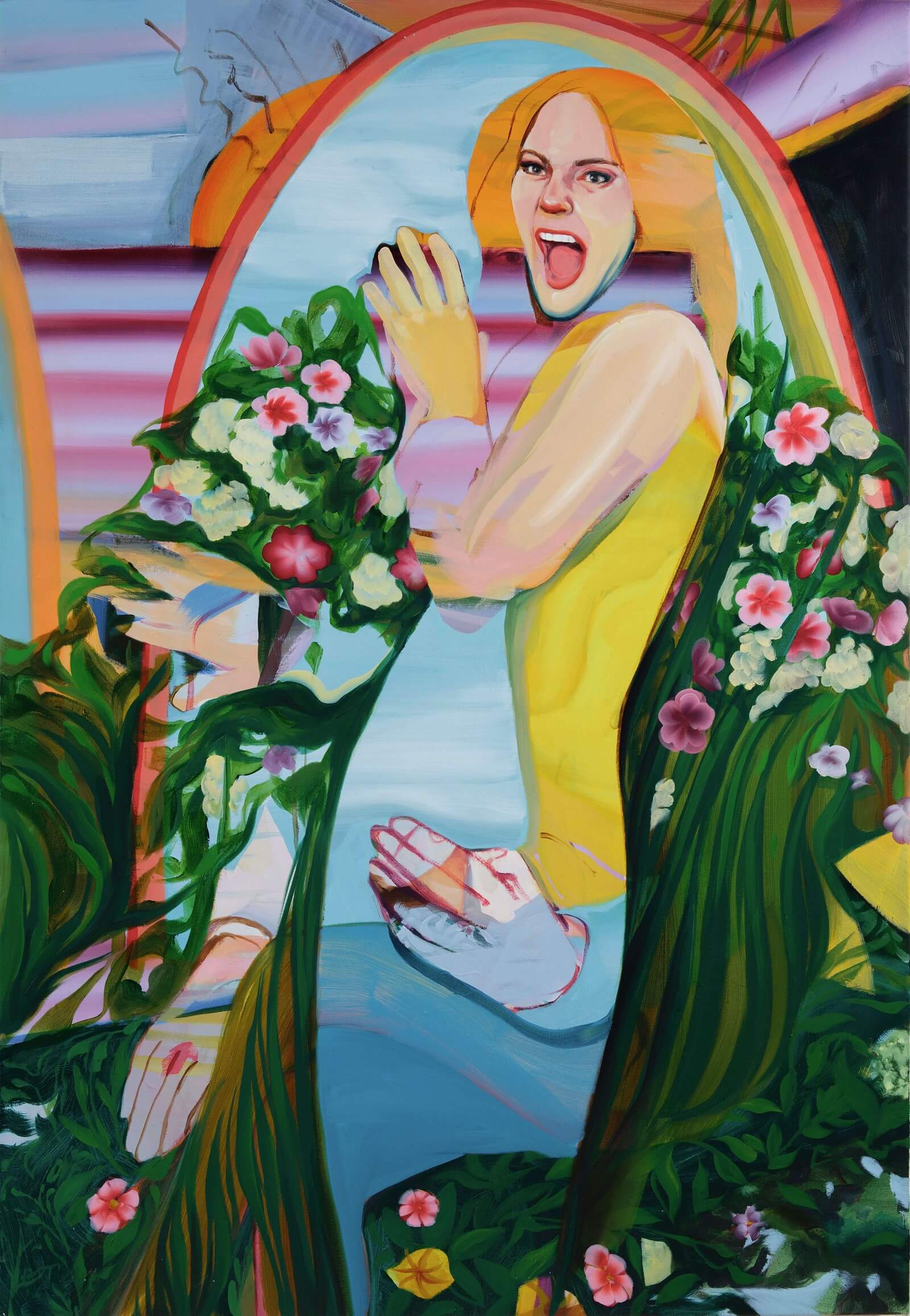Lizzy Lunday
Not Quite Paradise
➝ Download Press Release
We all know this feeling. The soothing light, the unimposing sun, friends all around. We wish days like these could never end. Hence our obsessions in registering them with a camera or, by way of colors and canvases the way Lizzy Lunday does here, in her debut show with GNYP Gallery. Still, in retrospect, there’s something eerie when we look at those registers. What felt like comfortable encounters, intoxicated mainly by bliss, love, and desire, now trigger a different sensation. Maybe what seemed to be joy was despair; what we thought to be peace was boredom. Perhaps that moment of intimacy we shared has something threatening about it. Paradise has lost its glow.
Appropriately called “Not Quite Paradise,” this show investigates the riches and paradoxes of our intimate encounters, these permanently intriguing aspects of human interaction. To do so, Lizzy Lunday developed an interesting strategy by operating within different temporalities. On the one hand, we are caught up by the attraction of her canvases rather quickly: through the vitality and allure of their color, explicit in the dynamic contrast between pinks, greens, and yellows, and through the expressive faces contagiously communicating their activities.
The attraction these faces exert, furthermore, has something to do with their origins. Derived from photos of celebrities and reality television stars, these faces, a clear product of our spectacle culture, are reworked sometimes to the point of almost abstraction, rendering their identities only vaguely familiar, and creating, consequently, a false notion of proximity, experienced both by us and by the figures in the canvas themselves.
Lizzy Lunday’s relationship to pictorial tradition produces stimulating referencing points, identifiable, for instance, in the Florentine archways housing some of the encounters between these figures, so familiar to those who know their way through Renaissance art and architecture. Similarly, the snake-like women in the paintings Another Dinner and Thorned Smile betray the fantastical iconography of Eve and adds yet another layer to her artistic process. Drawing from art historical tradition, paradise is depicted here somewhere between menacing and welcoming, full of figures whose identities are grounded on ambiguity and possibility. These works, therefore, understand celebrity culture as modern day narratives of our shared mythologies. We then feel impelled to participate in whatever they are doing, even if voyeuristically. So, we come closer.
By doing so, however, we notice a certain unstable mood, less upbeat than initially thought. A tension between the figures is spotted—along with a strange face here and an army of hands there. And then we begin to really interpret these paintings beyond the initial radiant seduction. Yet, without any straightforward narrative, it is up to us to try and tell what’s going on here, based on our experiences, desires, and fears. We are finally invited to the party, even though it is no longer what we had thought it to be just a moment ago. Beware of what you desire, for paradise may not be what you expect.
João Gabriel Rizek

